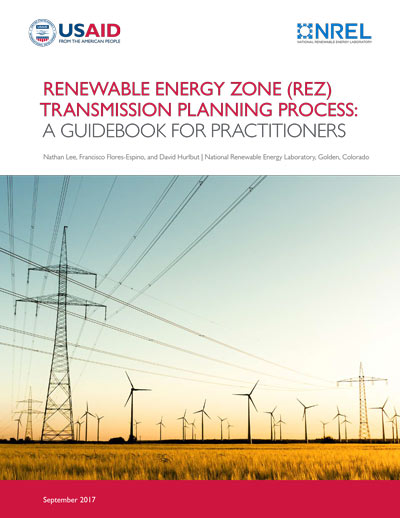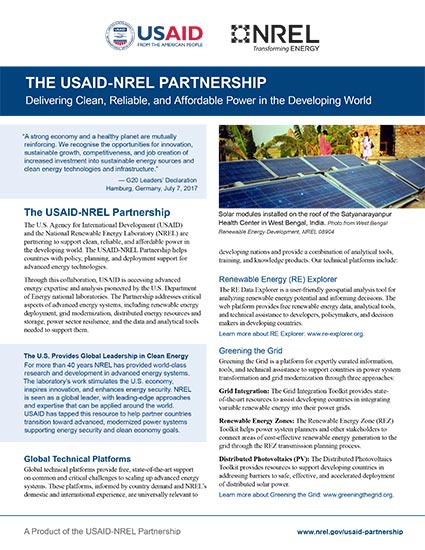- Energy Home
- How We Work
- Programs & Initiatives
- EmPOWERing Women and Girls
- Competitive Energy Procurement
- Toolkits
- Monitoring & Evaluation
- Resources
- Stories
Speeches Shim
A Guidebook for Practitioners
A guidebook to help power system planners, key decisionmakers, and stakeholders understand and use the renewable energy zone (REZ) transmission planning process to integrate transmission expansion and renewable energy generation planning.
Achieving clean energy goals may require new investments in transmission, especially if planners anticipate economic growth and increased demand for electricity. The renewable energy zone transmission planning process can help policymakers ensure their infrastructure investments achieve national goals in the most economical manner.
Renewable Energy Zone (REZ)
A REZ is a geographic area that enables the development of profitable and cost-effective grid-connected renewable energy. A REZ has high-quality renewable energy resources, suitable topography and land use designations, and demonstrated interest from developers, all of which support cost-effective renewable energy development.
REZ Transmission Planning
REZ transmission planning is a process to plan, approve, and build transmission infrastructure that connects REZs to the power system. The REZ process helps to increase the share of solar, wind, and other renewable energy resources in the power system while maintaining reliability and economics. The REZ process focuses on large-scale wind and solar resources that can be developed in sufficient quantities to warrant transmission system expansion and upgrades. These variable renewable energy resources are similar to large hydropower in that transmission systems must be brought to the location of the resource to connect them to the grid.
The REZ process focuses on large-scale wind and solar development because other renewable energy resources (e.g., geothermal or mini-hydropower) are seldom found in sufficient concentration to warrant consideration as a REZ. However, when located within a designated REZ, these supplemental renewable energy resources may provide additional value to a designated REZ.
Renewable Energy Development First Requires Transmission Expansion
Traditional transmission planning may be ill-suited to the characteristics of renewable energy development because transmission planning decisions need to be made well in advance of renewable generation development decisions. Wind and solar power need to be located in windy and sunny areas that are sometimes far from large load centers. Transmission system access to these areas may require 5–10 years to plan and construct; however, wind and solar generation projects only require 1–3 years to construct. Financing for these remote generation projects is not available without transmission access, but transmission lines cannot be built without a demonstrated need for service. Siting for conventional generation such as coal is seldom as constrained. Renewable energy planning that does not consider transmission expansion may limit countries to less economical renewable energy development.
Using This Guide
The REZ process presented here applies to renewable energy expansion that is constrained by the lack of existing transmission. The REZ process may not be applicable in situations in which other reasons limit renewable energy development, or if the existing transmission system already has capacity to accommodate new renewable energy development.
Policymakers, planners, and system operators around the world have used variations of the REZ process to chart the expansion of their transmission networks and overcome the barriers of traditional transmission planning.
The first sections of this guidebook present the organizational structure of the REZ process and an outline of the steps involved in the process. The remaining sections describe each step of the REZ process in detail.
The broad outline presented here is based on the Competitive Renewable Energy Zones (CREZ) process used in Texas between 2005 and 2015 and may be modified based on unique circumstances.



Comment
Make a general inquiry or suggest an improvement.